OKR (Objectives and Key Results) is a goal-setting framework that encourages ambitious, measurable goals to drive progress and results. Let's explore seven inspiring OKR examples across various business functions that you can use as templates to drive your team's success.
What is OKR?
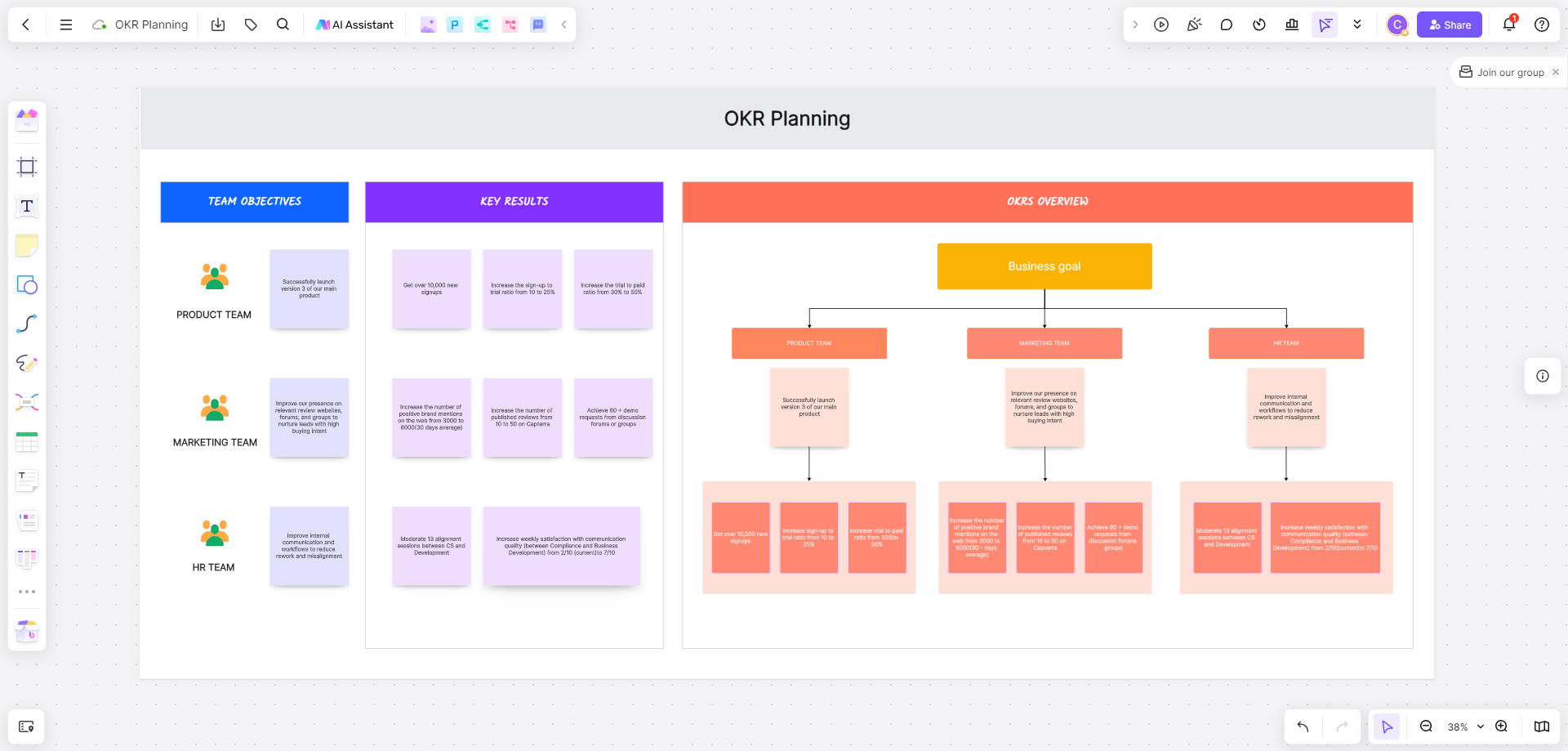
OKR, which stands for Objectives and Key Results, is a popular goal-setting framework that helps organizations set, track, and achieve their goals. The concept was originally developed by Intel and is now used by many successful companies like Google and LinkedIn.
An OKR consists of an Objective, which is a clearly defined goal, and up to five Key Results, which are specific, measurable actions that help achieve the Objective. The framework promotes alignment and engagement around measurable goals, providing a clear direction and focus for the entire organization.
What Are the Components of OKR
Objective: This is a qualitative goal that defines what you want to achieve. Objectives should be ambitious, inspirational, and actionable. They should provide a clear direction and motivate your team.
Key Results: These are quantitative measures used to track the achievement of the objective. They should be measurable, limited in number (typically 2-5 per objective), and time-bound.
What Are the Benefits of OKR
- Alignment: OKRs can help ensure that everyone in the organization is working towards the same goals, promoting alignment across teams and departments.
- Focus: By defining key results, OKRs help teams concentrate their efforts on what truly matters.
- Measurement: Since key results are measurable, it's easy to track progress and adjust strategies as needed.
- Motivation: OKRs encourage setting ambitious goals that challenge teams to innovate and excel.
Remember, while OKRs can be powerful tools for achieving organizational goals, their success largely depends on how well they are implemented and adopted within the culture of your organization.
OKR Example 1: Company Performance Appraisal
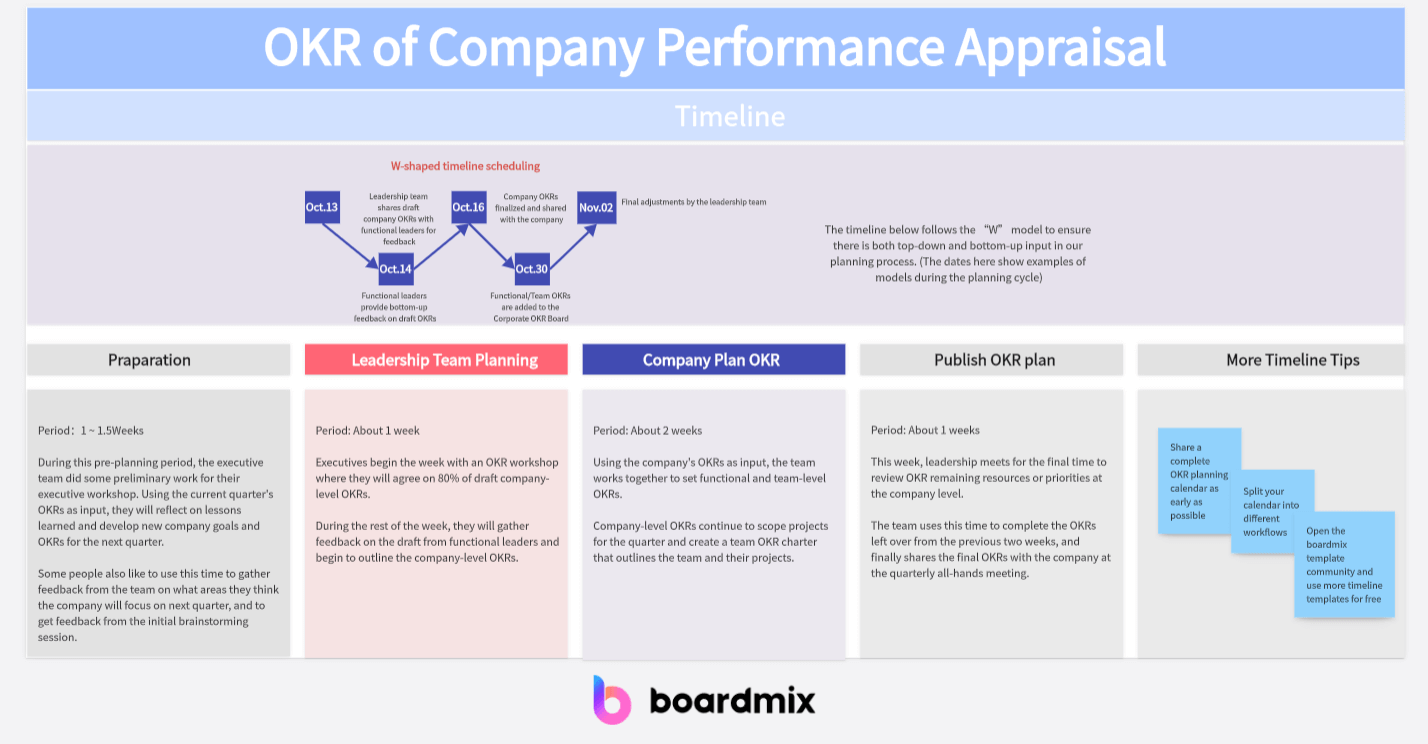
OKR is an effective goal management tool that can permeate corporate goals from the top leadership to the grassroots. Here is an OKR example about a company performance appraisal:
Objective: Improve the efficiency and accuracy of the company's performance appraisal.
Key Results:
1.Reduce the time consumption of appraisals by 25% in the next quarter through automation tools.
2. Increase the score of "satisfaction with performance appraisal" in employee satisfaction surveys, at least reaching 8 points (out of 10).
3.For all performance indicators, raise the fairness assessment score to above 90%.
This OKR example can be used to guide and measure the optimization work of the performance appraisal system, thereby improving its efficiency and accuracy, while also bringing higher employee satisfaction. Please note that this OKR can be adjusted and modified according to your company's specific needs.
OKR Example 2: Online Marketing Planning

Online marketing OKR (objectives and key results) planning refers to the process of setting clear goals and key results for online marketing activities. Its purpose is to help teams clarify their goals, stay focused, and work together to achieve them. The following is an example of OKR for online marketing planning.
Objective: Increase our brand’s online presence
Key Results:
1.Within the next quarter, attract 10,000 new followers across social media platforms.
Increase website traffic by 20%.
2.Successfully conducted 10 influential industry cooperations.
This OKR example can help online marketing teams plan their campaigns more effectively and improve their productivity, while also providing them with direction in the pursuit of their goals.
OKR Example 3: Team Brainstorming
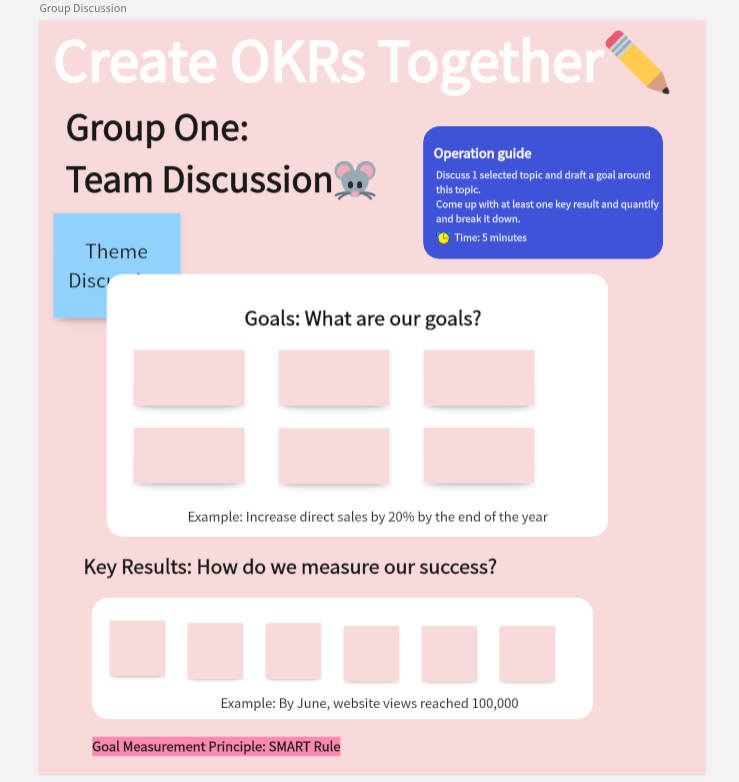
The online team collaboration platform Boardmix whiteboard allows teams to adopt OKR (objectives and key results) management methods in the form of brainstorming and team co-creation. Here is an example of OKRs for team brainstorming:
Step:
1.Set team OKR goals: Before starting the project, choose the highest-level goal as the team’s OKR goal.
2.Determine the top three issues through voting: Determine the top three issues that need priority discussion and resolution through voting.

3. Group drafting goals: After identifying the topics, team members work in groups to jointly draft specific goals that need to be achieved to achieve these topics.
4. Team Proposal Speech: After drafting the goals, each team will give a proposal speech to explain in detail how their goals and plans will help achieve the team's OKR goals.
The above process helps to quickly create OKRs with team members, which not only improves team collaboration efficiency, but also enables each member to participate in the goal setting process, further enhancing team cohesion.
OKR Example 4: Google Business Planning

Google's OKR (Objectives and Key Results) is a goal setting and performance management method designed to help teams and individuals clarify goals, measure results, and achieve measurable results within a clear time frame. It was developed by John Doerr, one of the co-founders of Google and a Silicon Valley management guru, and is widely used within Google.
At Google, each team and individual sets their own OKRs, usually at the beginning of each quarter (or year). OKR guides the direction of team and individual efforts by setting clear goals (Objectives). This helps ensure that everyone knows what they are working on and how their efforts align with the overall organization’s vision and strategy.
OKR requires teams and individuals to clearly focus on goals in each cycle, which helps reduce distractions and resources and focus on the most important matters.
OKR Example 5: Marketing Management Kanban

The marketing team OKR management dashboard is a tool used to plan, track and manage the marketing team's goals and key results. The OKR management method helps the team better clarify work priorities and measure work results by setting clear objectives (Objectives) and corresponding key results.
By constantly reviewing and evaluating the implementation of OKRs, we help the team discover problems, summarize experiences, and continuously improve working methods. Help the marketing team clarify what they expect to achieve so that the entire team has a clear understanding of the direction of their work.
OKR Example 6: Sales Department Goal Management
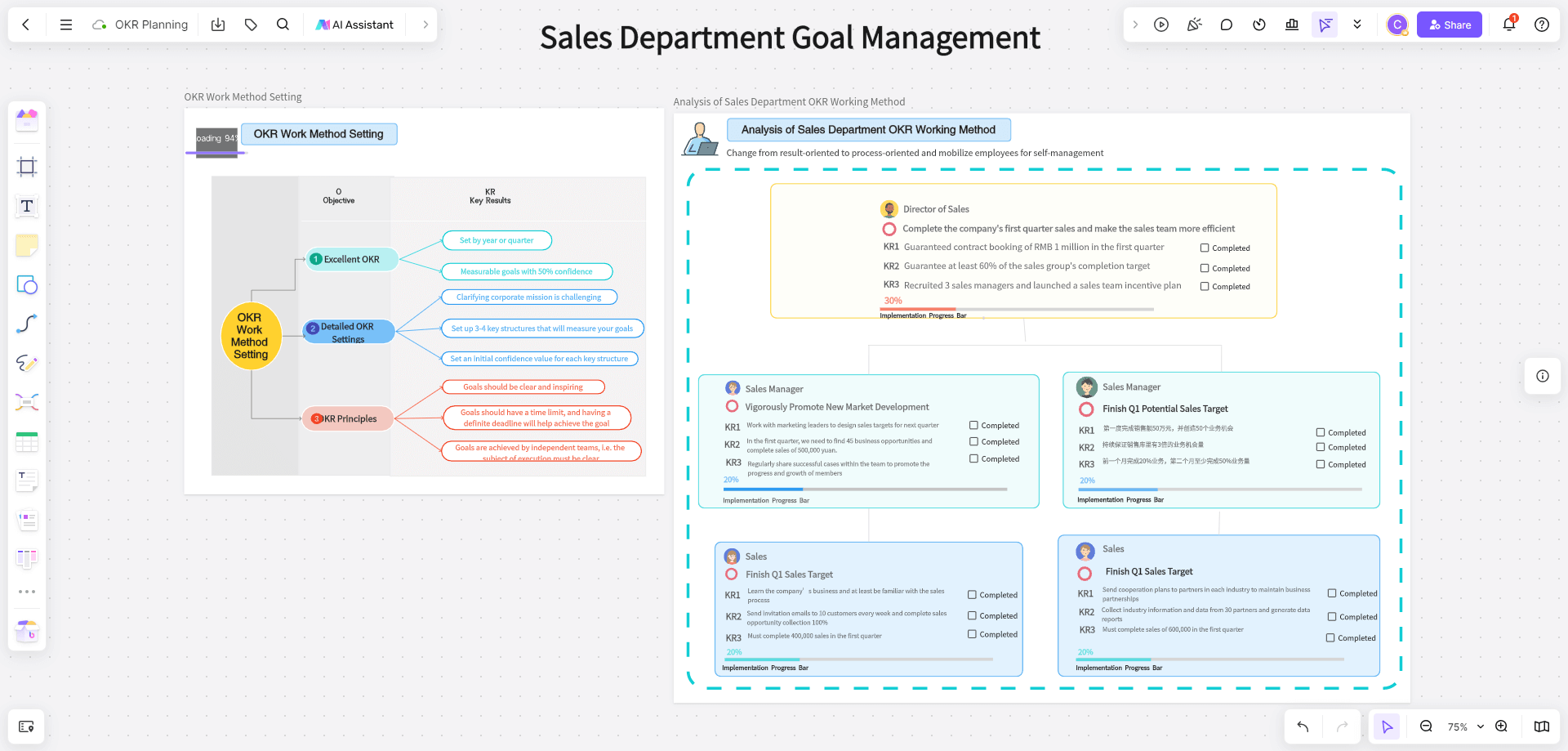
How to manage OKR goals within the team to effectively complete the strategic plan? Sales department OKR goal management is an effective method to help companies set and track goals. It helps sales teams clarify goals, increase motivation, and improve performance.
It motivates the sales team to continuously work towards goals and achieve excellent performance by setting clear objectives (Objectives) and key results (Key Results). Goals should be clear, measurable, challenging and actionable, and key results are important indicators for measuring the degree to which goals are achieved.
The sales department OKR example details the key points and implementation methods of sales department OKR goal management to help companies improve sales performance.
OKR Example 7: Personal Career Planning
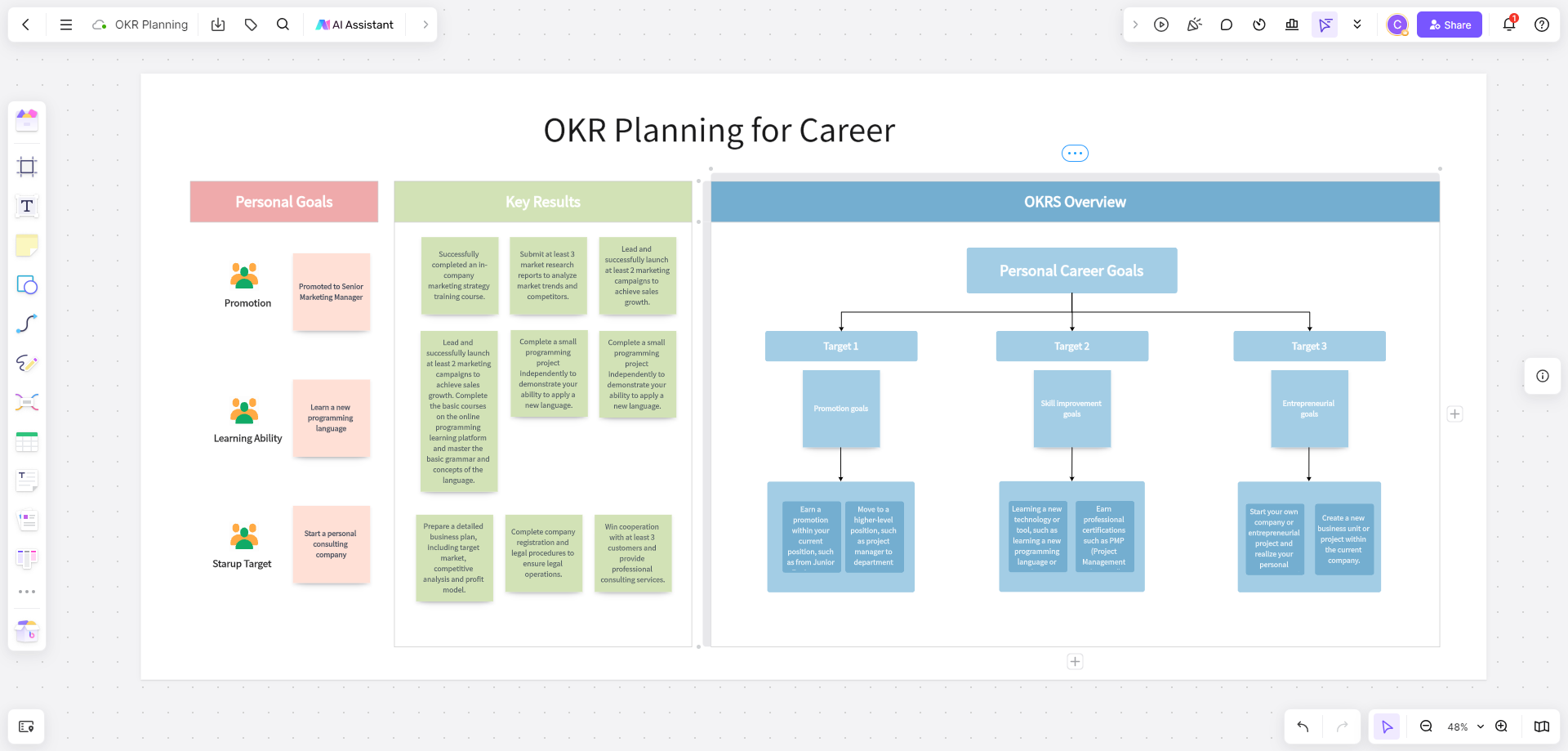
Many people use OKR (Objective and Key Results) in Boardmix whiteboard for their career planning. It can help you formulate and achieve career goals more clearly and targetedly.
OKR requires you to define your career goals clearly, ensuring that you know what you want to achieve. This helps you stay focused and avoid getting lost in daily trivia. Each key result is measurable, providing an objective indicator to assess your progress and success. This helps you understand whether you are on the right track and adjust strategies to achieve goals.
Adopting the OKR approach for your career planning can help you achieve career growth, whether it's in promotions, skill enhancement, leadership development or other aspects.
Conclusion
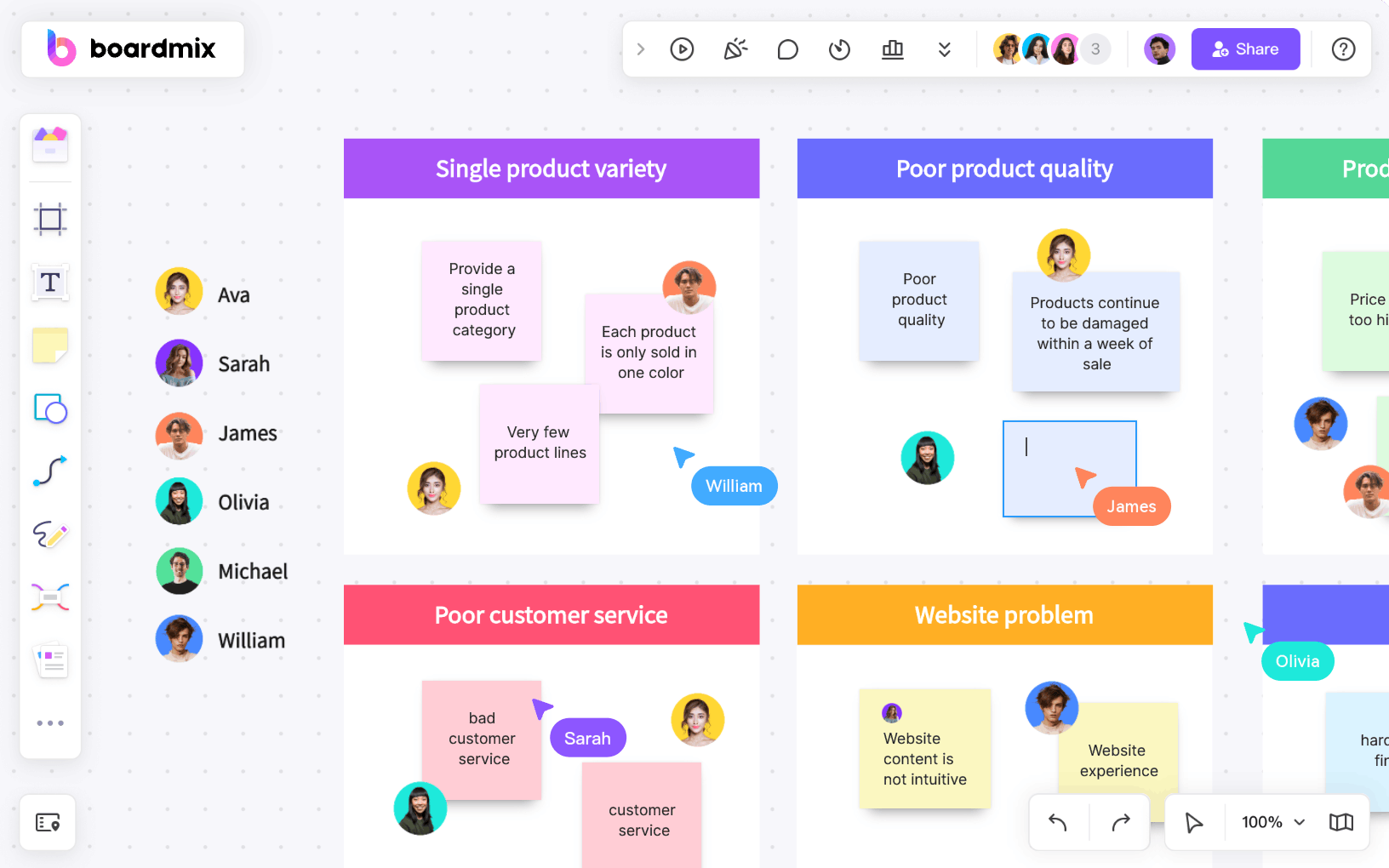
In conclusion, implementing Objectives and Key Results (OKRs) can significantly enhance organizational performance and individual productivity across various domains. Through the exploration of these seven inspiring OKR examples – from company-wide performance appraisals to personal career planning – it's evident that OKRs provide a structured framework for setting ambitious goals and aligning efforts towards achieving them. Whether it's streamlining business processes, fostering innovation through team brainstorming, or optimizing marketing and sales strategies, OKRs offer a versatile approach to drive results. By embracing OKRs, organizations and individuals alike can strive for continuous improvement, foster accountability, and ultimately realize their full potential in pursuit of success. Start your planning with OKR template in Boardmix now!













